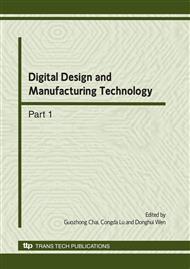p.484
p.489
p.495
p.502
p.506
p.511
p.516
p.521
p.525
Modeling and Experimental Analysis the Effect of Minimum Chip Thickness on Cutting Temperature in Micro-End-Milling Process
Abstract:
In this paper, the effect of minimum chip thickness on cutting temperature in micro-end- milling of aluminum alloy Al2024-T6 using a tungsten-carbide cutter are investigated and analyzed. The three-dimensional coupled thermal-mechanical finite element model is adopted to determine the effects of varying depth of cut on cutting temperature considering size effects. The simulation results show that the cutting temperature in micro-end-milling is lower than those occurring in conventional milling processes. When the depth of cut is approximately 40% of the cutting edge radius, there is no chip formation. The maximum temperature occurs at the contact region between micro cutting edge and workpiece, which shows an obvious size effect. The experimental verification of the simulation model is carried out on a micro-end-milling process of aluminum alloy 2024-T6 with a high precision infrared camera. The influence of various cutting depths on cutting temperature has been verified in experiments. The experimental measurements results are in a good agreement with the simulation results.
Info:
Periodical:
Pages:
506-510
Citation:
Online since:
March 2010
Authors:
Price:
Сopyright:
© 2010 Trans Tech Publications Ltd. All Rights Reserved
Share:
Citation:


